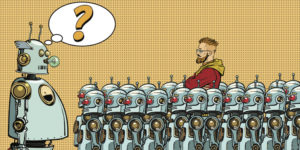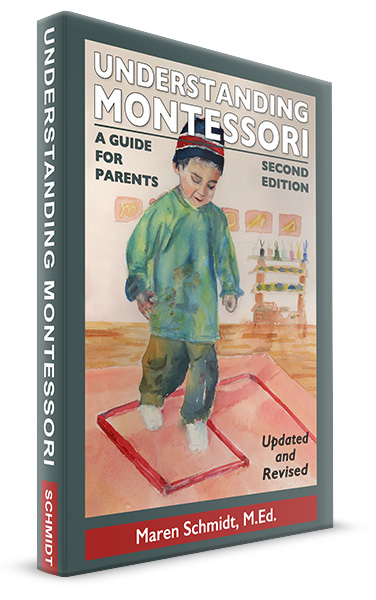
Reading an article in the July 2009 issue of Smithsonian called ”Birth of a Robot,” got me thinking about human intelligence versus artificial intelligence. Nicholas Butko, one of the researchers quoted in the article, said that they wanted to program their robots with curiosity, not knowledge.
Giulio Sandini, an Italian bioengineer says, ”If you want to build an intelligent system, you have to build a system that becomes intelligent. Intelligence is not only what you know but how you learn from what you know. Intelligence is acquiring information, a dynamic process.”
These scientists are saying that the cycle of learning begins with curiosity. Curiosity allows children to explore, examine, investigate and wonder, and in doing, so learn and discover new things. Learning gives pleasure and feeds the desire to repeat the experience. Repetition creates mastery of new skills. Having skills develops self-confidence. Self-confidence builds self-esteem, which in turn creates a sense of security in the child. With self-confidence, self-esteem and security intact, a child chooses to explore and begin a cycle of learning again.
Curiosity involves the mind, as well as all the senses. As parents and teachers know, this curiosity can sometimes create more mess and chaos than we might care to deal with. With our disapproval or by not enriching a child’s environment, we can short-circuit curiosity, the natural and vital fount of learning.
If our child is afraid to explore, learning is cut short. When a child’s world is in chaos, he or she will seek the familiar and comfortable, unwilling to leave the safety of the known. Curiosity is impacted by family stress, natural disasters, war and violence. Once crushed, curiosity is a difficult trait to redevelop.
Our disapproval of activities can prevent curiosity from creating the learning cycle. Hearing too much of, ”Don’t touch,” ”Don’t climb,” or ”Don’t get dirty,” diminishes the investigative urge.
Not feeling safe also curbs curiosity. Ever notice how a toddler will wander off, discover that a parent is not nearby and run back to touch ”home” base before going off again? A caring adult who provides a safe haven and a relationship to share the child’s thrill of discovery reinforces the learning cycle that begins with a child’s desire to know.
Children’s curious enthusiasm for life can help adults rediscover the joy of learning. When we allow ourselves childlike curiosity, we create an active mind instead of a passive one. The mind is like a muscle that becomes stronger through continual exercise. Asking questions and digging for answers makes your mind stronger day by day.
Curiosity helps us pick out new ideas that spur creativity. When we are curious and open to new ideas, it’s as if our brains look for the new and unexpected. For example, most of us have had the experience of learning a new word and then seeing it pop up everywhere.
Being curious opens up new possibilities. Trying new foods, traveling, even driving to work a different way, can open up our minds to new ways of thinking and doing things.
Being and staying curious is at the root of intelligence, learning and fun. Without it, we’d just be robots.

